A Giant Salamander is a large amphibian in the Cryptobranchidae family. Researchers recognize four living species in two taxonomic genuses, Cryptobranchus and Andrias. The Hellbender lives in North America, while the Chinese, South China, and Japanese species live in China and Japan, respectively. Read on to learn about the Giant Salamander.
Description of the Giant Salamander
Each of these species is slightly different than the next. All four have primarily brown or grey colored skin. The Japanese species is mostly uniform in color, while Hellbender’s skin has red mottling, and the Chinese species’ skin has lighter grey mottling.
True to their name, these creatures measure between 12 in. long and 70 in. long. The largest individual ever recorded measured nearly 6 feet long and weighed 130 lbs.
Interesting Facts About the Giant Salamander
If their massive size wasn’t enough, read on to learn what else makes these large amphibians so unique, below.
- Skin Secretions – Even though they grow quite large, these salamanders also possess a number of other defensive strategies. When threatened, most species secrete a whitish substance from their skin that has a pepper-like scent and taste.
- Dorsoventrally Flattened – These creatures have a dorsoventrally flattened body shape. To put it simply, they look like someone sat on them and flattened them like a pancake! Other dorsoventrally flattened animals include stingrays, flounders, and more.
- Flat Function – This body shape is actually another adaptation to avoid predators. Because they have such a flattened shape, even large individuals can easily wedge themselves beneath rocks and into cracks to escape predators.
- Poor Eyesight – Even though most individuals live in clear streams and creeks, they do not use their eyes to capture food. Instead, they have many sensitive pores along their mouths. These pores help them sense movements of creatures nearby.
Habitat of the Giant Salamander
Though each species has slightly different habitat preferences, these creatures typically live in clean, clear waters. They prefer habitats with running water rather than stagnant areas. Most prefer regions with rocks or mud, usually near the banks or edges of the water. Unlike many other salamanders, these creatures do not leave the water.
Distribution of the Giant Salamander
Each species has its own unique distribution. The Hellbender lives in the eastern United States. The Chinese and South China species both live in China, primarily central and southern China.
In some areas, the Chinese and South China populations overlap and interbreed. Finally, the Japanese species lives in Japan, in the southern or southwest regions of Japan.
Diet of the Giant Salamander
These amphibians have different diets based on where they live and how large they are. Larger individuals can capture and subdue larger prey. They are carnivorous, but primarily eat invertebrates. Some common prey items include crabs, crayfish, insects, shrimp, and fish.
Giant Salamander and Human Interaction
Human interaction impacts each species of salamander differently. However, human activity threatens all four species. Humans illegally capture and eat the three Asian species, and use their parts in Traditional Chinese Medicine. Habitat destruction also impacts all of the various species, and they are particularly sensitive to pollution.
The IUCN lists the Hellbender and Japanese species as Near Threatened. They list the Chinese species as Critically Endangered, and have not assessed the South China species.
Domestication
Humans have not domesticated these creatures in any way.
Does the Giant Salamander Make a Good Pet
No, you should not own any of these salamanders as pets. Because most face some level of threat, each individual is important for the survival of the species. In most places, it is illegal to own these amphibians as pets.
Giant Salamander Care
Some zoos, research facilities, and farms house these large salamanders. Captive populations are important for the survival of the species, particularly those that face severe pressure from human activity.
Their enclosures must be large enough for them to comfortably move about, and provide plenty of shelter for them to hide. They eat commercially produced amphibian feed, as well as shrimp, small fish, crabs, and more.
Behavior of the Giant Salamander
Specific behavior varies from species to species. Most species live primarily solitary lives. They spend their time foraging for food or hiding in rock crevices to avoid predators.
The only time these amphibians congregate in large social groups is during the breeding season. As breeding season arrives, they travel to search for mates.
Reproduction of the Giant Salamander
All of the species utilize external fertilization, where the female lays eggs and then the male fertilizes them. A clutch contains about 200 eggs or more. The males guard the eggs until they hatch, but do not continue to protect the larval young.
It takes approximately 3 months for the eggs to hatch. The larval young are independent at birth, but work together to hunt until they reach a larger size.

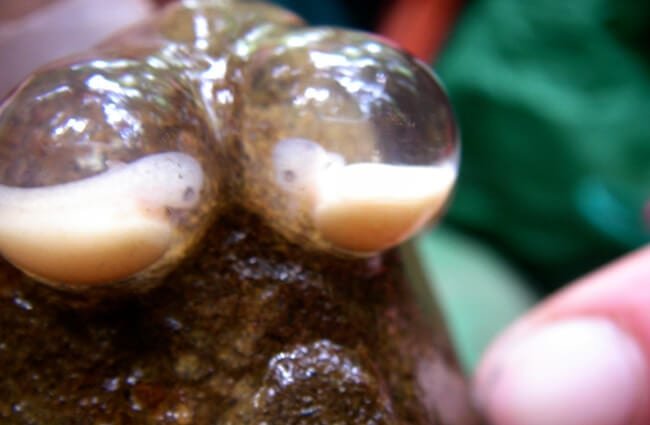
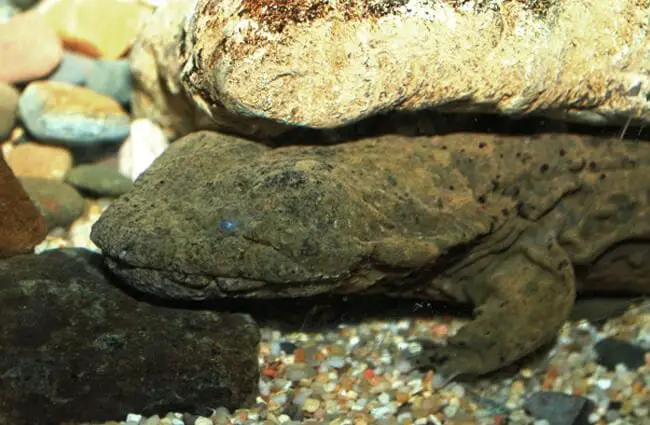

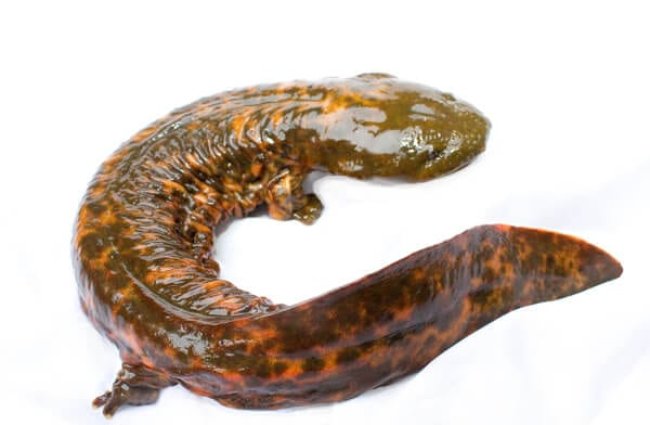
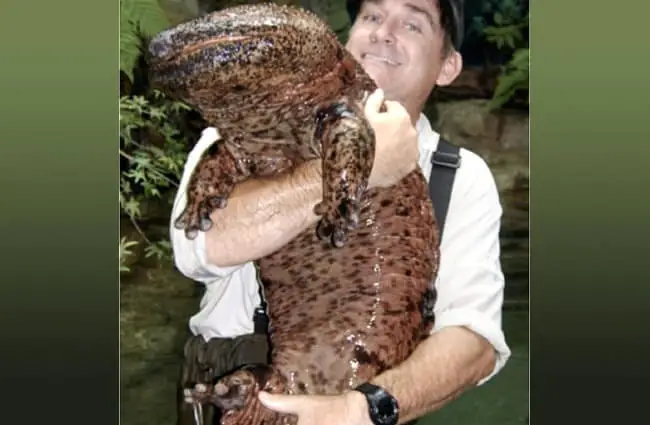
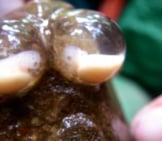

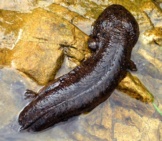
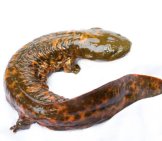

![Red Angus Closeup of a beautiful Red Angus cowPhoto by: U.S. Department of Agriculture [pubic domain]https://creativecommons.org/licenses/by/2.0/](https://animals.net/wp-content/uploads/2020/03/Red-Angus-4-238x178.jpg)




![Red Angus Closeup of a beautiful Red Angus cowPhoto by: U.S. Department of Agriculture [pubic domain]https://creativecommons.org/licenses/by/2.0/](https://animals.net/wp-content/uploads/2020/03/Red-Angus-4-100x75.jpg)

